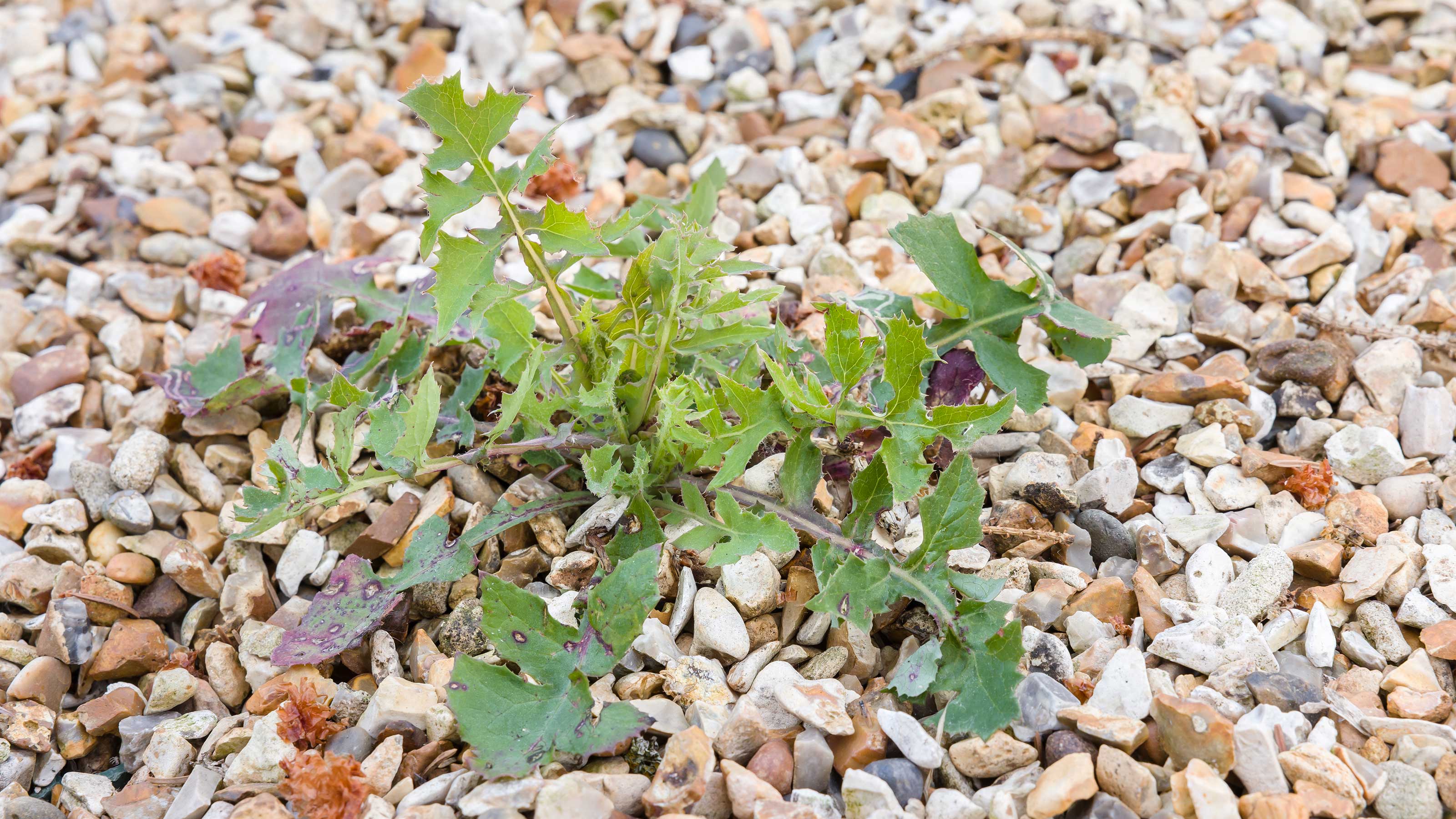How to remove weeds from gravel — and stop them coming back
Removing weeds from gravel patios, gardens and driveways doesn't need to be a chore. Follow our quick guide to getting rid of these annoying invaders

Knowing how to remove weeds from gravel can be key to keeping gravel patios and driveways looking neat and tidy.
The UK is home to some pretty hardy weed species such as grassy weeds like henbit and purslane to robust weeds such as broadleaf or dandelion. Sadly, some of these plants are so tough they can push up through the gravel on your driveway or in your garden, rendering your garden landscaping ideas rather unsightly.
But removing weeds from gravel can be a simple affair and may not require the purchase of costly weed killers. We spoke to a couple of gardening experts to outline the most effective methods of ensuring your gravel is pristine once more.
1. Pull out weeds by hand
Sometimes the simplest methods are the most effective. If there is a small number of weeds coming through your gravel, it may be best for you to pull them out by hand. Gravel driveway ideas can soon look unsightly as weeds pop up, so tackling the job before they have an opportunity to spread is key.
Gardening expert Harry Bodell at PriceYourJob.co.uk says you should wear gloves when pulling weeds out by hand to protect your hands. He adds: “Try to grab the weeds as low as possible, just above the soil level. Grip the weeds firmly and slowly wiggle and pull the weed until it loosens from the soil.
“That way, you’ll pull up the root as well. This will prevent the weed from growing back.”
2. Use a DIY weed killer
While store-bought weed killers, such as Neudorff WeedFree Plus Concentrated Weedkiller, can be effective, you can create a DIY weed killer for your gravel. One option is to use diluted vinegar (avoid horticultural vinegar) and baking soda, although you need to ensure you're not spraying nearby plants and flowers.
Harry added: “Spray this solution on and around the weeds in your gravel. Repeat the process until every weed has been thoroughly covered.
“You’ll want to do this on a dry day so the solution doesn’t get washed away and so that it doesn’t accidentally become swept into nearby plants or your lawn.”
3. Use a weed membrane
While gravel is a great low-maintenance garden idea, preparation is key to keeping gravel weed-free for longer. A weed membrane is great for preventing weeds from coming through your gravel.
You will need to remove the gravel from the area, then lay a weed membrane or landscape fabric over the soil before spreading the gravel.
A weed membrane will act as a barrier, preventing the weeds from growing by blocking the sunlight and impeding weed seeds from reaching the soil. It’s important to ensure the membrane covers the entire area that you intend to gravel.
You will need to make sure the membrane is secured in place to prevent it from shifting or becoming exposed, Harry adds. You can find weed membranes of varying sizes and uses (ie for driveways) here on B&Q Tradepoint.
4. Choose larger gravel
Smaller gravel may allow weeds to settle and germinate much more easily, while larger gravel pieces help prevent the growth of weeds. It’s also important to ensure there is a sufficient depth of gravel.
The layer of gravel should be 2-3 inches deep. A thicker layer of gravel will provide much better coverage and will reduce the likelihood of weeds pushing through.
It may also be a good idea to install a weed-resistant edging such as a metal or plastic strip along the edge of the gravel area. This will help to create a clear boundary and will also prevent weeds from creeping in from the sides of the gravel.
5. Maintain the area
Even with the right amount of preventative measures, some weeds may still find their way onto the gravel surface.
Harry advises gardeners to inspect the area regularly and promptly remove any weeds that begin to sprout.
Guy Jenkins from plant care company Neudorff says it is crucial to prevent the regrowth of unwanted weeds after removing them from under your gravel. “You can achieve this by checking the pH level in the soil. To sweeten the soil and make it more alkaline, you can add lime or wood ashes to the soil underneath the gravel," he says.
“This type of soil is not conducive to moss growth, making it less likely for any moss to grow in the surrounding area."
Get the Homebuilding & Renovating Newsletter
Bring your dream home to life with expert advice, how to guides and design inspiration. Sign up for our newsletter and get two free tickets to a Homebuilding & Renovating Show near you.
Sam is based in Coventry and has been a news reporter for nearly 20 years. His work has featured in the Mirror, The Sun, MailOnline, the Independent, and news outlets throughout the world. As a copywriter, he has written for clients as diverse as Saint-Gobain, Michelin, Halfords Autocentre, Great British Heating, and Irwin Industrial Tools. During the pandemic, he converted a van into a mini-camper and is currently planning to convert his shed into an office and Star Wars shrine.

